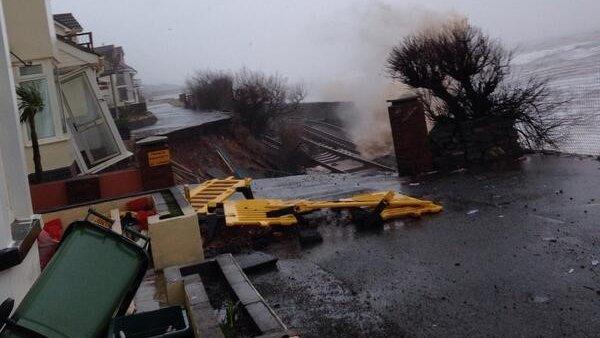Dawlish sea wall: £30m work to secure railway 'for 100 years'
- Published
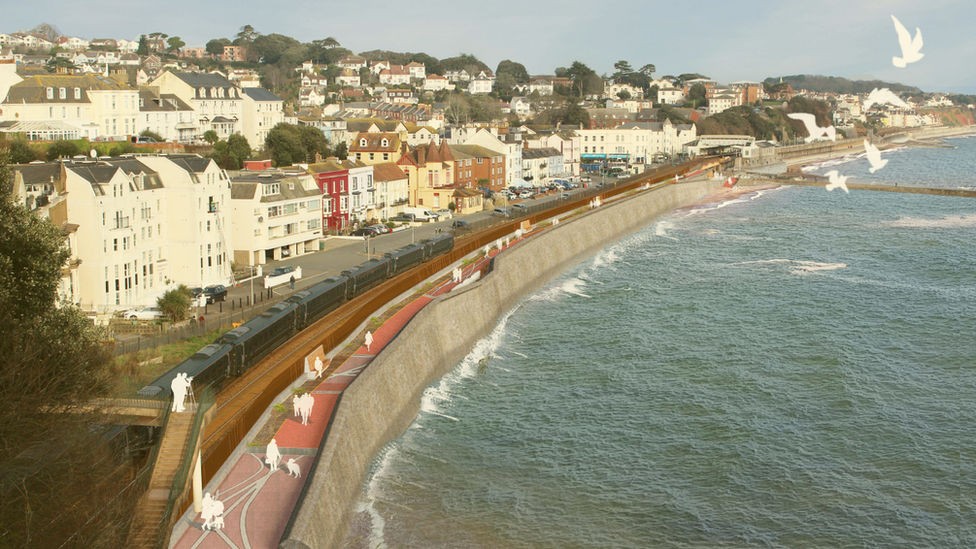
Network Rail has released projections of what the new wall will look like
Work is beginning on a £30m scheme to protect a coastal railway line that washed into the sea five years ago.
A new 25ft (7.5m) high sea wall is being built at Dawlish, Devon after the line collapsed during storms on 4 February 2014.
The track which links Devon and Cornwall with the rest of the country was left dangling in the air after waves gouged out holes in the defences.
Network Rail aims to "secure the future of the line for the next 100 years".
Here is all you need to know about the Dawlish sea wall improvement scheme, from the Local Democracy Reporting Service (LDRS).
When does work begin?
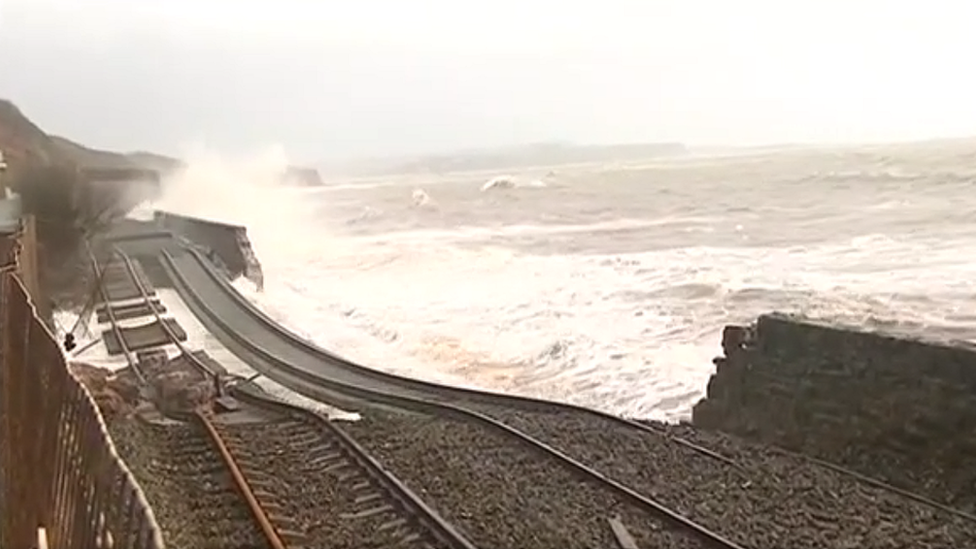
The line was left dangling in the air at Dawlish after the 2014 storms
Phase one starts on 1 June with site preparation work.
Work on the concrete foundations starts on Monday and will last until 14 July when there will be a break until 9 September to avoid disruption during the summer.
The scheduled finish date is 23 January 2020.
What is the Network Rail plan?

Plans show a walkway will be raised and widened for pedestrians
To raise the height of the sea wall from 5m (16ft) to 7.5m.
The walkway will also be raised and widened to 4m (13ft) from 3.1m (10ft), with a safety barrier.
Why is the work needed?

Waves gouged out sea defences at Dawlish in 2014
To protect the line from closure and to reduce flooding of the track by 90%.
Network Rail points to forecasts of a sea level rise of 0.8m (3ft) in the next 100 years.
Western route managing director Mark Langman, said: "world leading engineers" had designed the plans to "ensure the railway line is more resilient to extreme weather and rising sea levels for generations to come".
What happens in September?

Plans show a walkway will be raised and widened for pedestrians
The main construction of the sea wall will begin. Pre-cast concrete panels will be installed, track drainage put in and existing promenade sections will be demolished with pre-cast concrete units installed.
Surfacing work will take place on the promenade with lighting and seating.
How will the new sea wall be built?
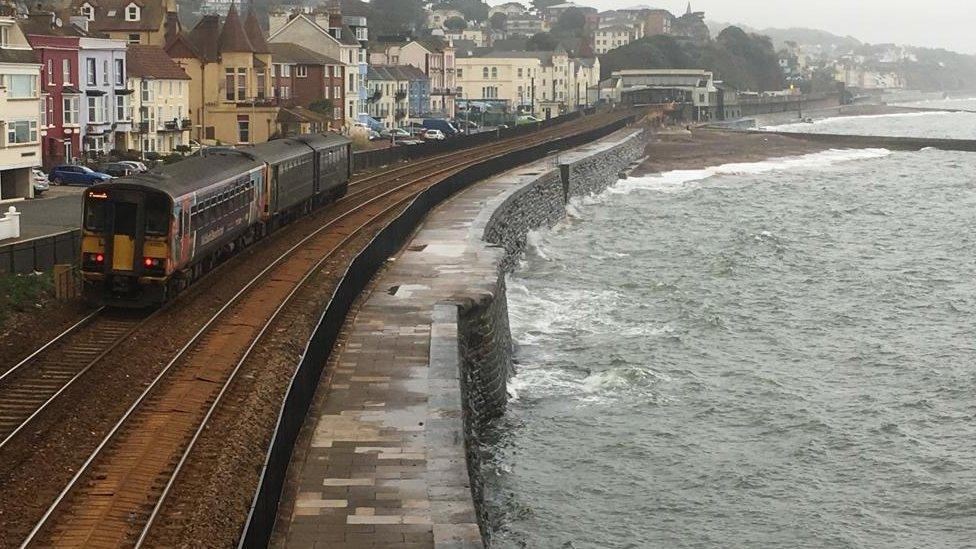
Flooding of the track will be reduced by 90% says Network Rail
New concrete panels will clad the existing wall and this will be filled in with concrete.
Ramps will connect the new raised promenade to the existing walkway levels at Colonnade underbridge and Boat Cove.
When will staff be working?
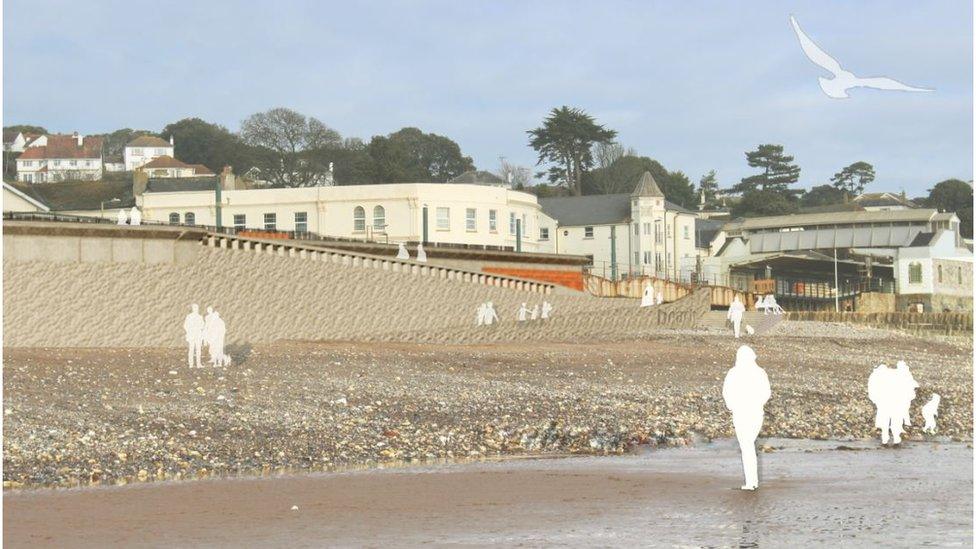
Work will be carried out six days a week on the wall to maximise spring tide working
Round the clock. Typically work will start five hours before and finish five hours after low tide.
Work will be carried out six days a week, but these days will be selected to maximise spring tide working.
What about car parking?

Homes on the sea front were also damaged in the storms
For the duration of the work, there will be no car parking spaces available in Marine Parade, with the parking bays suspended. This will enable them to be used by construction staff to enable the delivery of vital materials.
The parking suspension on Marine Parade will begin on 3 June.
What about access to the beach?
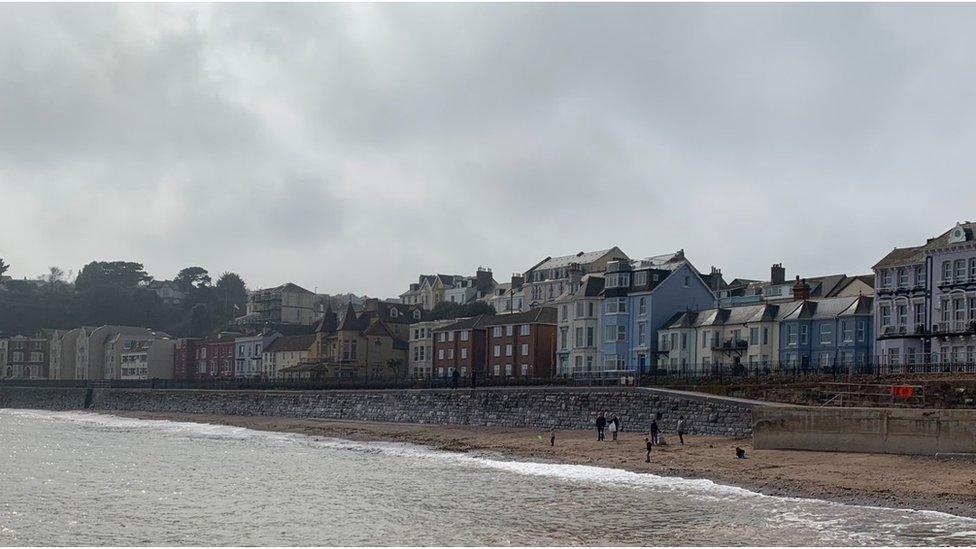
Building work will be stopped over the summer and for the rest of the year includes arrangements for access to the beach
Where possible, "as much access to the beach in front of Marine Parade will be retained for public use" says Network Rail.
During phase one, public access to Boat Cove will be maintained via the footbridge over the railway line, with a pedestrian walkway installed from the footbridge through Boat Cove to Coryton Cove.

Overtopping by waves at Dawlish has caused flooding and cancellations
- Published4 February 2019
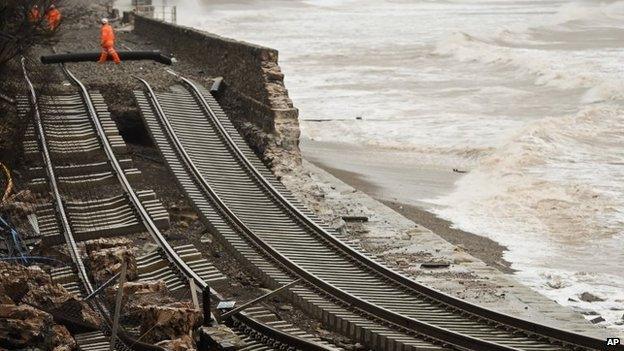
- Published9 November 2018
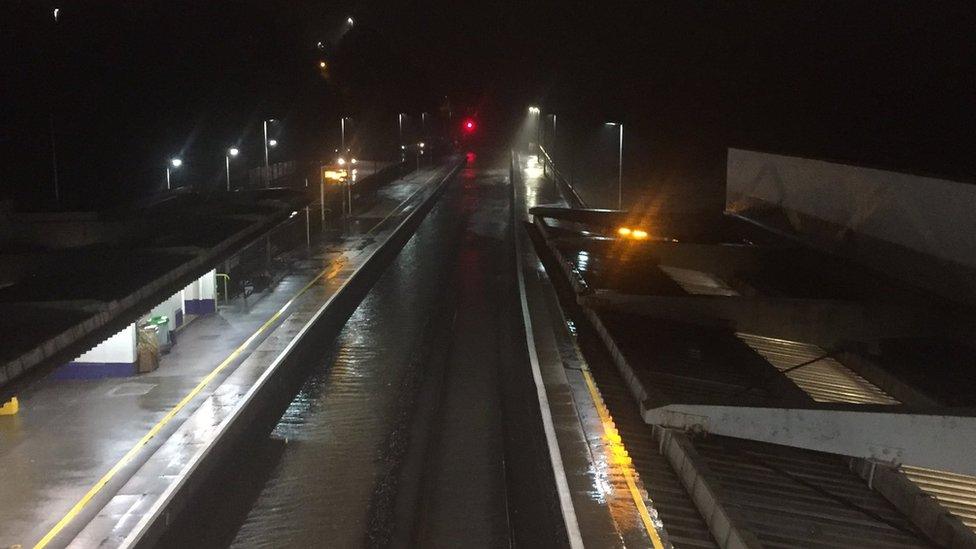
- Published15 October 2018
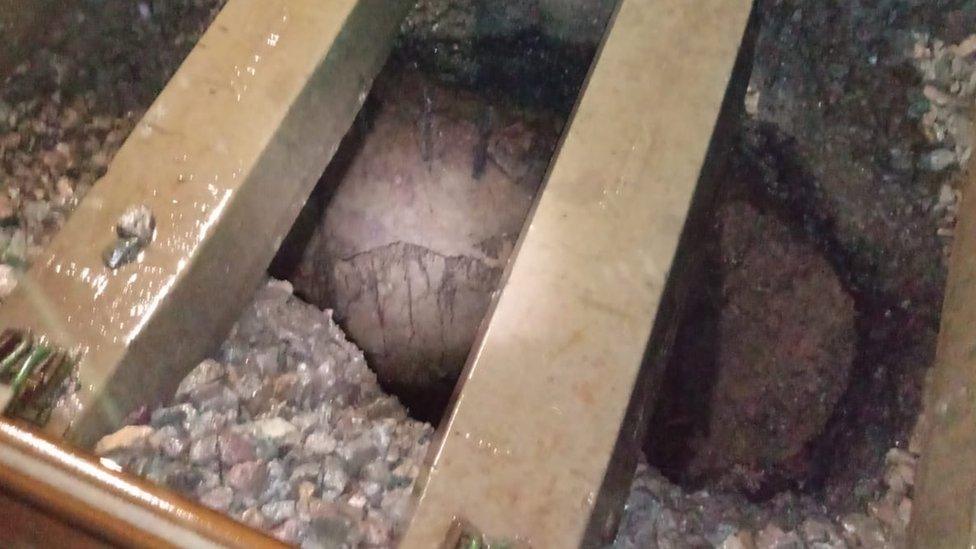
- Published12 March 2014
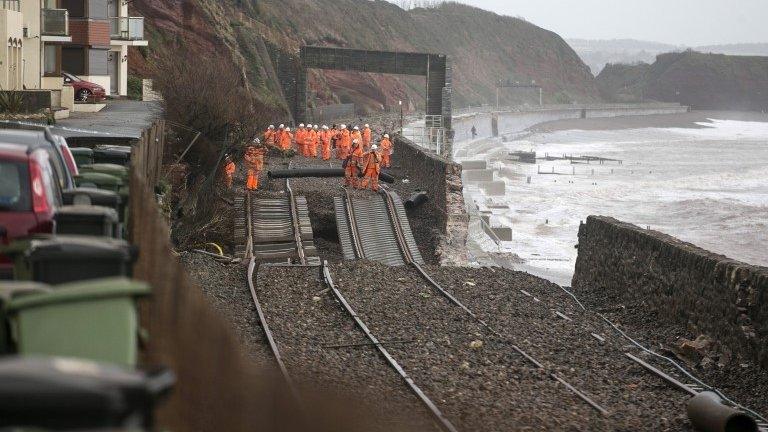
- Published5 February 2014
